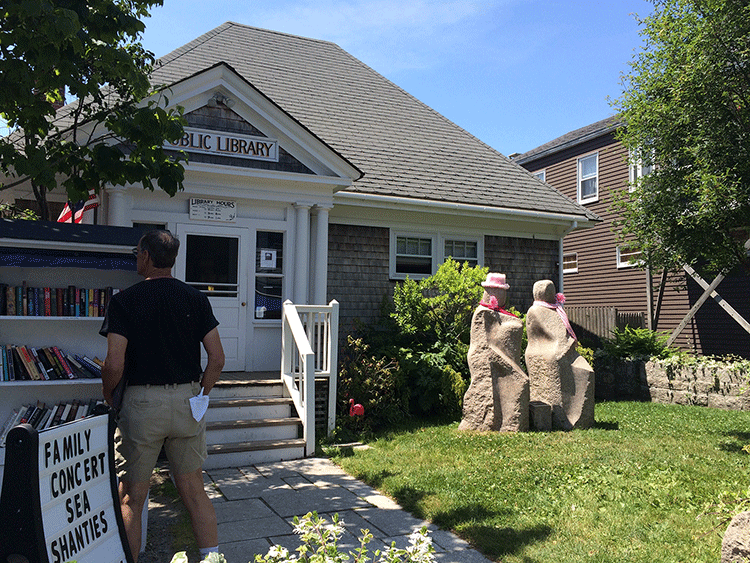Reconstructing the Archive
Reflections: New Ethical Questions for Archival Researchers
GESA E. KIRSCH
Let me start—and end—this first edition of Provocations by noting that I felt provoked, both by the digital format and by the content presented by these four authors turned video producers: We witness new hybrid genres, new materials, new ways of performing scholarly and archival work. We encounter long-kept family secrets, precious family heirlooms, “orphan artifacts” found at estate sales, and a forgotten poet/composition scholar. These four projects raise new questions about ethical dimensions of archival research, questions I raise here and continue to ponder. They also raise important questions about memory (whose memory, whose story, whose secret do we encounter?), materiality (the shifting meanings of heirlooms and artifacts), and method (who collects archival materials, tells the story, for what purpose, with what consequences and impact?)—three important touchstones for archival researchers, as Liz Rohan and I discovered when we collected essays for Beyond the Archives: Research as a Lived Process.
I found myself particularly drawn to two pieces: Alexandra Hidalgo’s “Family Archives and the Rhetoric of Loss” and Erin Anderson’s multimedia memoir, “What Hadn’t Happened.” Both of these contributions evoke powerful personal connections—family history—and offer many classic elements of storytelling: intrigue, suspense, loss, suffering, redemption, and resolution. As the cofounder and coeditor of a digital journal (Present Tense), Hidalgo knows firsthand that images and video recordings need to add value to a scholarly project and enrich the audience’s experience. Her video does precisely that when she presents images, voices, and stories of family members, showcases family heirlooms, plays a clip from an old family movie, and traces her father’s footsteps.
Hildalgo's video fascinated me: I was disturbed by her father’s mysterious disappearance and the things he left behind—manuscripts, photos, a mistress, unfinished correspondence, and a patent for an invention. I saw a life interrupted and the ripple effect it had on all of those whose lives he touched. As Hidalgo’s quest for solving the mystery of her dad’s disappearance unfolds, we witness her efforts to gather information, collect family stories, and identify artifacts of his life—all clues that might help solve the mystery that propels her journey. As she narrates the story, she drops another bombshell—the uncomfortable truths she learns about her grandmother. Hidalgo never quite lets us know what she learned but hints at abuse and trauma. As the story unfolds, we join her on a journey of adventure, discovery, and loss; the making and remaking of a life history; and the author’s attempts to connect past and present, family members near and far. She hints at the future when she includes scenes from her current life—her two young boys and husband, who learn about Hidalgo’s father through the artifacts he left behind. Several questions stayed with me: What is the role of nostalgia, longing, and loss in this video production? What is the author’s role and responsibility when she casts doubts on—even accuses—her grandmother without providing readers with any details? What has she learned from this journey deep into a painful chapter of family history?
I was equally drawn to Erin Anderson’s narrative, “What Hadn’t Happened.” The author plunges us into a story of family tragedy by revealing a sad and traumatic moment her grandmother Olive experienced as a child of three years: She was blamed for the death of her eighteen-month-old sister. In collecting the fragments of this long-held family secret; in telling, revisiting and revising the narratives of different family members; and in offering audio samples of the oral histories she collected, Anderson is thoughtful of the minefield on which she is about to step. She writes, “I use my storytelling practice as a means to reflect on and in some way compose a sense of personal ethics that guide the very story I’m telling” (2, emphasis added) and notes that “the impulses behind [her] decision [to share this family secret] are both aesthetic and deeply ethical… they are a loving attempt to give voice to a story that is neither simple nor settled, while honoring the silence of those who, for many reasons, either could not or cannot be heard” (3). I was eager to read Anderson’s narrative because she recognizes—and admits to struggling with—the ethical dilemmas she faces in revealing and/or concealing this long-held secret. I felt indignation as I learned about the great injustice done to her grandmother, and compassion for her great-grandmother when Anderson pauses, reflecting on the fact that she is in no position to simply pass the blame to another family member. Instead, she realizes that “this is not a story about blame at all; it’s a story about forgiveness, about survival” (15). I was left with several questions: How does Anderson define a “sense of personal ethics”? How does it inform her storytelling and justify her decision to go public with a long-kept family secret? What are the implications of her decision? In the short run and the long term?
Anderson’s text is the longest of the four pieces, supplemented by relatively brief audio and video clips that enhance the story line by introducing multiple perspectives. I appreciated this ratio of print to video because it allowed me to read at my leisure and listen to audio excerpts when I was ready to learn more. I mention this print/video ratio because I felt discouraged when I encountered videos that were twenty minutes long and essentially presented the reading of an academic paper. That kind of video required more than I was willing to give—my undivided attention to yet another screen. If I am investing time in viewing a video production, I expect professional quality, and that takes professional training, which, with some luck, a new generation of scholars will receive as a matter of course in graduate school.
I understand that Provocations, as a new digital venue, is designed to be “fresh, unusual, different, very smart, heavily mediated and offer a new scholarly perspective that challenges current understandings” (Hawisher, email correspondence, 2 June 2015), yet I still prefer a written article, or even an audio clip that allows me to read/listen at my leisure, reread nuggets that catch my interest, and move along at my own pace. I believe that in order to challenge scholarly conventions of reading, writing, and processing information, we need to design new work with the audience’s concerns front and center, making content inviting, professional, engaging, and easy to access and navigate. As a Hidalgo knows from her experience as the editor of a digital journal, “not every project will shine on video.”
When I encountered Jody Shipka’s work, I was intrigued by the historical figures she presents but I struggled to find the exigency for her archival work. I wanted to know, what is the impetus for collecting and analyzing “orphan artifacts,” and for diving into “Fred and Dorothy’s” lives? I can certainly understand the fascination with orphan artifacts and the desire to “inhabit” these materials, bringing them back to life and making them relevant once more. However, I also wanted to know: How and when do we draw a line between archival research and prying into other people’s lives? What are our ethical obligations for preserving the privacy, dignity, and integrity of historical subjects? How do we best handle materials that reveal deeply personal moments, such as a love letter and a cancer diagnosis?
I realize that the objects of Shipka’s research are orphaned artifacts that, most likely, would have been discarded if not sold at a yard sale. Still, I am not convinced that easy access automatically gives us permission to appropriate and use mementos of other people’s life histories. My uneasiness grew when Shipka asked other people—colleagues, students, and friends—to perform/read excerpts from these orphan artifacts. Are we enriching our understanding of archival knowledge-making? Or are we creating participatory audiences for voyeurism? How would I feel, I asked myself, if my personal papers, photos, letters, and medical records would one day find their way into a flea market, sell for pocket change, and end up in a multimedia project put together by strangers? Would that feel empowering or invasive to my sense of self, identity, and dignity?
These ethical and representational questions, as I see it, have parallels to the issues presented by Heidi McKee and James Porter when they explore research focused on online communities. The authors urge us to be mindful of the fact that just because digital communities are publicly accessible via the Internet does not give scholars permission to lurk, intrude, or use information without revealing their intentions or asking for some kind of permission. McKee and Porter remind us that online members of discussion groups often consider such forums safe, supportive spaces where they can exchange information and learn from peers who share similar concerns or interests, whether these concerns focus on motherhood, cancer treatment, death and grieving, sexual identity, or any number of other topics. McKee and Porter develop a thoughtful set of criteria for thinking through these complex ethical situations that might prove useful for archival researchers working with heirlooms, family secrets, and material artifacts. Perhaps we need to ask, what are the intended and unintended consequences of sharing deeply private moments, even when done posthumously?
Finally, Trisha Campbell’s recovery project of Josephine Miles, a lost poet and composition scholar, fascinated me. I found myself wanting to read excerpts of Miles’s work, review a summary of her major contributions, and learn more about her linguistic and computational analyses that sound like precursors of digital tools now in vogue with humanities scholars, such as Google’s Ngram viewer. Clearly, Campbell has identified a worthy project and an intriguing historical figure, but I was not convinced that “performing” Josephine Miles by blurring images of present-day author Campbell and historical figure Miles was the most effective way to reintroduce Miles into the cannon of rhetorical scholarship. I wanted to know: why blur the boundaries of the contemporary scholar and the historical figure? Why read what amounts to an academic paper rather than taking us on a journey of discovery, surprise, and intrigue? Why not use a greater variety of visual images, such as photos, quotes, book covers, articles, and poems to reveal glimpses of Josephine Miles?
Coda: I write these reflections in a remote part of Maine where I have been spending a good portion of my summer this year, far away from Wi-Fi, cell phone towers, and the Internet. I come here because of the beauty and peace I find and the good friends who live nearby while the rest of the world seems far away. So it is perhaps ironic that I have been asked to respond to the inaugural issue of an online venue that requires connectivity. To view the videos, I had to make the trip to the town library, ten miles away.

It was a helpful reminder that the world is not as connected as we often imagine, a fact I consider a blessing, at least when we have a choice in the matter. I treasure the dark quiet nights away from the city, the sounds of loons on the pond, the osprey’s cry as it hovers above the marsh, the porcupine ambling through the woods, and the big turtle sunning on a rock.


Works Cited
Hawisher, Gail E. Email correspondence. 2 June 2015.
Kirsch, Gesa E. and Liz Rohan, eds. Beyond the Archives: Research as a Lived Process. Carbondale: Southern Illinois UP, 2008.
McKee, Heidi and James E. Porter. “The Ethics of Conducting Writing Research on the Internet: How Heuristics Help.” Writing Studies Research in Practice: Methods and Methodology. Ed. Lee Nickoson and Mary P. Sheridan. Carbondale: Southern Illinois UP, 2012. 245-60.
All photographs provided by Gesa E.Kirsch.